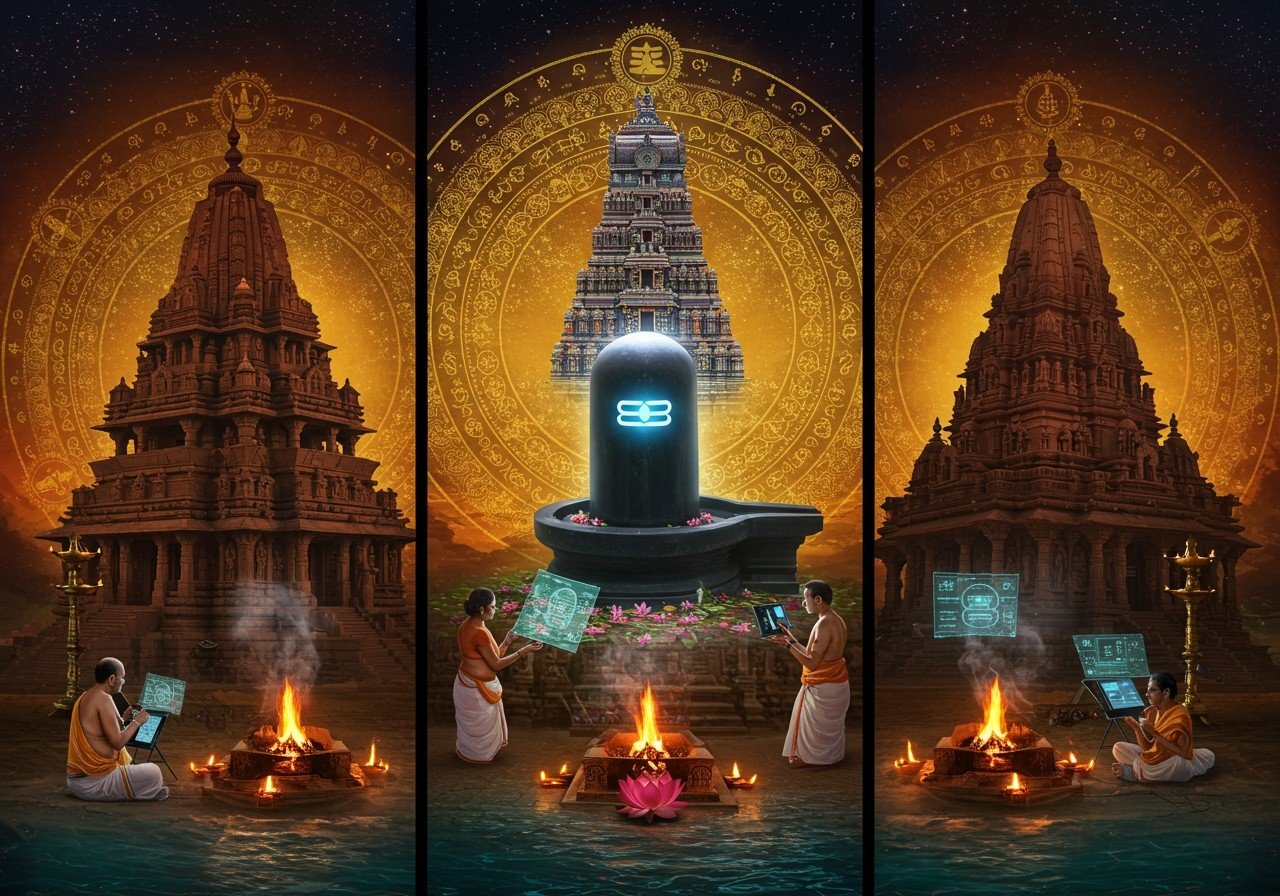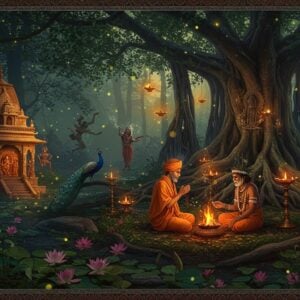
The Trilinga Kshetras, three revered temple towns in Southern India – Srisailam, Draksharamam, and Kaleshwaram – hold profound cultural and spiritual significance, echoing millennia of tradition. As we journey into 2025 and beyond, understanding and preserving these ancient customs becomes paramount for our cultural continuity.
Cultural Significance of Trilinga Kshetras
These Kshetras are vital centers of Shaivism, dedicated to Lord Shiva. Each temple boasts unique architectural styles and narratives, standing as guardians of ancient Indian art and architecture. Their influence extends beyond the spiritual, shaping regional cultures and preserving local dialects and practices. They also contribute to literature, music, and dance, enriching the cultural tapestry of the region and fostering a sense of community and belonging.
Rituals and ceremonies are the lifeblood of these sacred sites. Daily rituals, the Nitya Pujas, maintain the sanctity of the temples. Major festivals like Mahashivaratri draw devotees together in shared devotion. Unique practices, such as the Lingodbhava ceremony at Srisailam, highlight the distinct traditions of each Kshetra. Community involvement is key to preserving these rituals amidst the currents of modern life.
However, preserving these traditions faces challenges from urbanization, environmental pressures, and the homogenizing forces of globalization. Sustainable tourism and heritage conservation projects by government bodies and NGOs become essential. Technology also offers solutions, with digital archiving and virtual reality experiences offering new ways to preserve and share these traditions globally. Ultimately, the heart of preservation lies in the hands of the community, whose dedication will ensure the continuity of these sacred practices.
Delving Deeper into the Trilinga Kshetras
These ancient temple towns are not merely historical relics, but living embodiments of India’s spiritual heritage. They offer a palpable connection to Lord Shiva, the revered deity of Shaivism. These temples are more than just structures; they are keepers of our collective cultural memory.
The Essence of Shaivism
The Trilinga Kshetras serve as pivotal centers for Shaivism, each temple radiating the devotion to Lord Shiva. From Srisailam’s intricate carvings to Draksharamam’s serene ambiance and Kaleshwaram’s vibrant history, each Kshetra possesses a unique charm. Their influence permeates the local culture, safeguarding ancient art, architecture, and even local dialects, ensuring their survival through the ages.
Rituals and Ceremonies: The Heart of Tradition
The daily rituals, known as Nitya Pujas, are the heartbeat of these temples, sustaining their sacredness. Grand festivals like Mahashivaratri bring together devotees in a wave of shared faith and reverence. Unique ceremonies, like Srisailam’s Lingodbhava, distinguish each Kshetra, adding to the richness and diversity of our traditions. The active participation of the community is the cornerstone of preserving these rituals in our rapidly changing world.
Poojn.in: Your Partner in Preserving Sacred Traditions
At poojn.in, we understand the deep significance of these rituals. We offer a curated selection of authentic puja items and supplies, making it easier for you to uphold the sacred traditions of the Trilinga Kshetras and beyond. Whether you’re seeking pure copper kalash for Ganga jal, premium bel patra, traditional dhoop and deep items, or vibhuti (sacred ash), we have everything you need to enhance your spiritual practice. Explore our collection today and experience the convenience of having authentic puja essentials delivered right to your doorstep.
Preserving Our Trilingual Heritage
Just as the Trilinga Kshetras represent a confluence of spiritual significance, India’s ancient trilingual tradition, with Sanskrit, Prakrit, and Pali, showcases the rich tapestry of our linguistic heritage. Sanskrit, the language of religious rituals and scholarly discourse, Prakrit, the language of the common people, and Pali, the language of Buddhist scriptures, each played a vital role in shaping our cultural identity. Preserving these languages, alongside our diverse regional dialects, is essential for safeguarding India’s rich cultural heritage. This involves promoting mother tongues, integrating technology to support language learning, and fostering a deep appreciation for our linguistic diversity.
Embracing the Future, Honoring the Past
As we look towards the future, preserving the legacy of the Trilinga Kshetras becomes even more crucial. These sacred sites are not just remnants of the past; they are living testaments to our rich cultural heritage. By embracing modern technology and fostering community engagement, we can ensure these traditions continue to thrive, inspiring future generations. Through our collective efforts, the Trilinga Kshetras will continue to shine as beacons of cultural richness and spiritual enlightenment, guiding us on our journey of preserving the heart of Shaivism and the essence of our traditions. Learn more about preserving Dravidian temples and India’s architectural heritage.
If you’re planning a pilgrimage to Tirumala, our comprehensive guide can assist you in preparing for a spiritually fulfilling journey.
Explore the symbolism and teachings of the epic Ramayana here and discover the vibrant celebrations of Ramayana festivals here.


